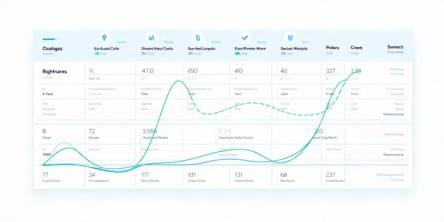Tips for Developing Location-Based AR Apps

Do you remember Pokémon Go? Yep, that famous augmented reality-based app that became a rage almost as soon as it was launched. And what’s unique about that mobile game app, besides, of course, the Pokémon and augmented reality bit, is that it also integrated location-based data to bring the concept to life. The game app made use of the mobile device’s geographical location to cast various elements to the environment in real-time. The idea sounds exciting to imagine the wonders it can do.
And the best part about location-based augmented reality apps is that they are highly versatile, i.e., they find applications in several domains. We will explain — as mentioned earlier, such apps make use of location data, i.e., GPS, along with a digital iteration of a compass, to pinpoint devices’ precise location in real-time. As you can imagine, such abilities come in handy in several other domains than just gaming. We have listed some of the most popular use cases of location-based AR apps.
- Travel: Such apps have an abundance of scope when it comes to the travel and tourism industry; they can be used to ease the process of looking up information for tourists. Imagine if they could point their phone at a building, restaurant, or any other point of interest and instantly receive all the requisite knowledge they need!
- Retail: Among the earliest adopters of augmented reality technology, the sector has found an abundance of uses for such apps. For example, they are enabling customers to see how apparel would look at them or how a specific piece of furniture will look in their house.
- Education: It empowers teachers to use the ‘Show and Tell’ method to deliver and achieve a substantially better quality of learning. Imagine children being able to look up at the ceiling and seeing the constellations they are learning about.
Okay, we have established just how useful location-based augmented reality apps can be. Now, it is time to share some tips that will help you develop high-quality apps. We have organized them based on popular tools, to make things even easier for you.
-
Apple ARKit:
-
One of its most significant advantages is the union of computer data vision and camera data — a duo crucial for ensuring high levels of accuracy while tracking the environment.
-
To take your app to the next level, make use of the face tracking toolkit; this robust face tracking system can be used to build new effects in your app.
-
Since lighting is a crucial part of the experience associated with location-based augmented reality apps, ARKit can be used to empower the app with the ability to gauge the environment’s natural lighting and then complement it with the virtual elements. The goal is to ensure as natural an experience as possible.
-
-
Google ARCore:
-
Leverage the light estimation feature to light up virtual elements so they can harmonize with the environment’s natural lighting.
-
Don’t forget about the motion tracking feature with which the app can be given the ability to identify motion and then trigger the appropriate virtual elements.
-
This free to use tool for building augmented reality-based apps is best suited for making Android-only apps. It supports all versions from Android 7.0 and higher.
-
-
Wikitude:
-
Since this one is compatible with both iOS and Android, it can be used to make apps for either one of the two OS.
-
It offers an advanced simultaneous localization and mapping feature, i.e., developers working with this AR app development tool can build apps with the ability not only to scan but also to enhance complex environments.
-
Augmented reality is decidedly a great resource to complement any app’s abilities, as demonstrated by the above discussion. So, remember that when you kick off your GPS location app development project, AR and other modern technologies should be on your agenda.
Similar Articles
Food delivery applications, including Uber Eats, DoorDash, Zomato, Swiggy, and Grubhub, generate large volumes of valuable data.
Modern businesses are drowning in communication overload, and much of that burden stems from outdated tools that simply can’t keep up
Building lending software isn’t just a technical project—it’s a business decision. Whether you're a fintech founder or part of a traditional lending institution trying to go digital, three questions will shape everything that follows
Learn why robust security is crucial for super app development. Explore key strategies and best practices for mobile app development security.
Walkie-talkies with an extensive reception capacity have changed significantly when it comes to portable communication by displaying cutting-edge features with seamless connectivity that covers more than just the state
USB-C technology has revolutionized the way we charge our devices, offering faster charging speeds, higher power delivery, and universal compatibility across multiple devices
Discover expert mobile app development strategies to create a viral app that attracts users and boosts engagement
Optimize app localization for iOS users across the EU with language, cultural, and regulatory adaptations. Engage users and boost retention with these tips!
Discover the top 10 mobile app development trends of 2024! Explore 5G, AI, AR/VR, blockchain, and more to stay ahead in the ever-evolving app development landscape.









